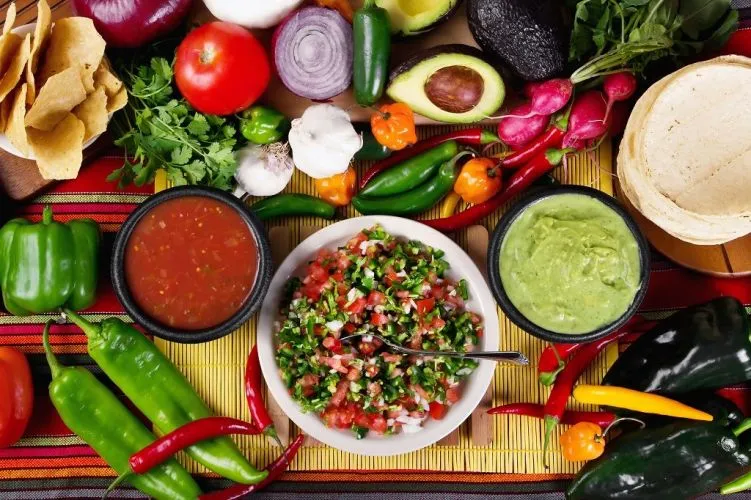
Perú: : the cultural richness, the Spanish, Indian, Chinese, African and Creole heritages are immersed in each dish, being even one of the countries mentioned as a gastronomic power in the world. Its culinary origin dates back to the “Incas” and other “pre-Inca” cultures. At that time ingredients such as corn, potatoes, and spices in their various varieties were already present. However the kitchen turned over throughout the nineteenth century after the arrival of the Spanish conquerors and the different waves of migration mentioned above.
It is necessary to emphasize that the most Famous chefs worldwide recognize the exquisiteness of Peruvian food and include in their recipes lists dishes such as “Pachamanca” (a tasty food, which mixes different meats, tubers and vegetables). Its way of preparation is in an underground hole, heated with burning stones) they mix “Ceviche,”(fresh fish, lemons, onions, hot peppers, and fresh cilantro) “Grilled chicken,” “Tacacho with cecina and chorizo”,(Roasted banana with salted and smoked pork meat) “Chijaukay”(Chunks of crispy chicken and sauce made with Chinese ingredients). This is of the most known and exquisite in the country and in the world. So if you go to Peru you can’t help but taste one of these dishes.
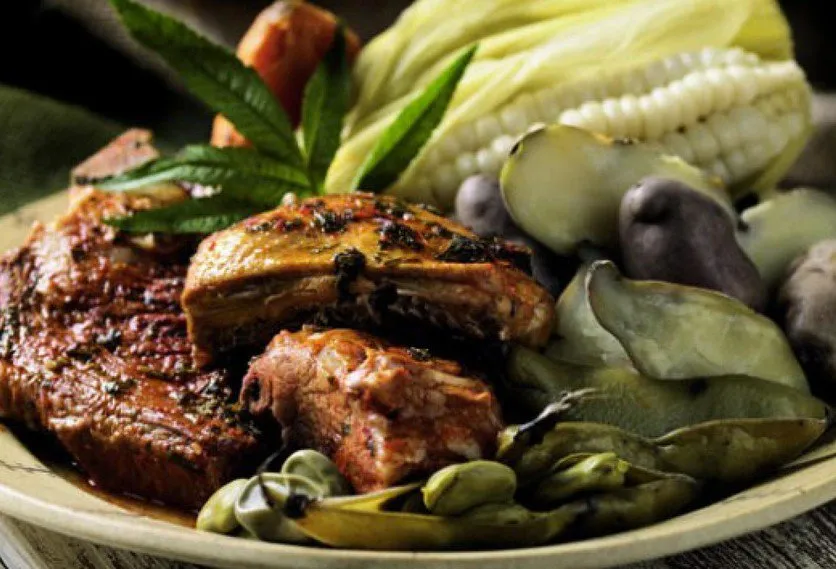
link
México México tasty and legendary, this is how the gastronomy of the Aztec country is described. The explosion of flavors, colors, smells and textures is inherited from pre-Hispanic and Spanish cultures. There are those who say that in order to taste Mexican food, first of all, you have to understand where it comes from and how it has evolved; it is even said that these dishes have created legends and stories that are told from generation to generation.
The base of the Mexican gastronomy had its origin in the pre-Hispanic epoch with the development of cultures like the Mexica, Zapoteca, Maya and Mixteca. Was conformed by plates of corn with chiles and herbs, also beans, tomatoes or nopales, ingredients that today are the base of many plates of the country.
The arrival of the Spaniards, specifically in the second decade of the XVI, century, brought with it the arrival of a great variety of animals, such as cattle, chickens, pigs, goats, sheep, as well as rice, wheat, oats, olive oil, wine, almonds and parsley, fusing the crops and forming part of the autochthonous food. However, it was not a mixture nor a complete fusion. Mexico still conserves its culinary roots in some dishes; the Spaniards only enrich it and not alter its essence.
Among the delicacies you can not miss if you visit the Aztec country are the “Pozole,”(broth prepared with corn, meat, chili and vegetables), quesadillas shrimp, spicy meats, “Chimichangas,”(flour tortillas stuffed with rice, cheese and pork meat) “Mole”(sauce made from fresh chiles, ground tomatoes, epazote leaves, holy grass or avocado) among others. Without a doubt, this cultural exchange makes today’s Mexican cuisine one of the greatest cuisines in the world.
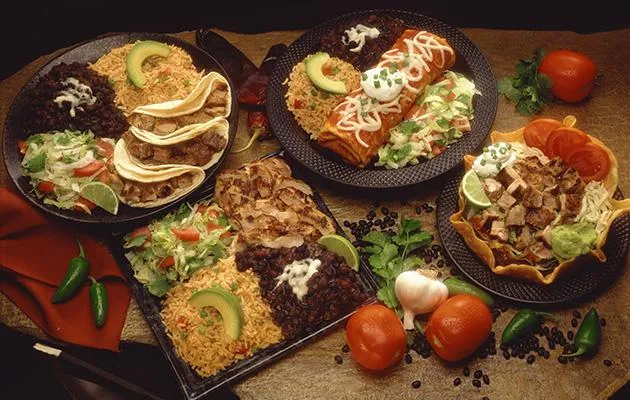
link
The gastronomy Argentina The gastronomy Argentina is inescapably the result of the successful mixture of Italian, Spanish, indigenous and Creole cuisine being considered one of the most successful in Latin America.
In the pre-Columbian era there was a division of the native peoples into three large cultural groups: the Andean farmers, who were in the Northwest, "Cuyo" and the "Sierras de Córdoba" and who belonged to the Andean Civilization; another group were the hunters and gatherers, who were located in Patagonia; and finall, the farmers of the plains. The Spaniards after their arrival complemented their contribution to the diet based on corn, beans, pumpkin, potato, quinoa, incorporating wheat, fig tree, vine and cattle, goat and pig.
With the Spanish conquest, the indigenous cuisine was revolutionized and the customs of the Spaniards were spread, introducing stews, fried foods, dressings and spices. From these ingredients an extensive variety of dishes are produced. Later, the Italians, Welsh, Germans, Swiss, among others, that they arrived from Europe and enriched the kitchen even more and with it an even more extensive food production.
Among the dishes that should not be missed if you visit this beautiful country is the “Chorizo Bife”, “Creole Chorizo,” “Vacío” (narrow cut of meat, with a lot of good-tasting bone), meat pies, among others. It is important to clarify that there are differences in food according to each region, ie between urban and rural cuisine traditional, the latter being more folkloric and located in the north of the country. Another outstanding aspect that characterizes the Argentine cuisine is the spirit of unity and the gathering around the food; the importance of sharing with the family when enjoying a dish or tasting a drink, enters into these important traditions.

link
On the other hand, the gastronomy of Colombia is the product of three main ethnic groups that populated the territory: indigenous, African and Spanish. They define not only their culture but also their gastronomy, obtaining from it a diversity of dishes that correspond to the fusion of these cultures.
In pre-Hispanic times the consumption of food was mainly native products from agriculture and hunting, having predominantly a variety of tubers and fruits.
Subsequently, following the discovery of America, between the XVI y XIX centuries, new ingredients were incorporated into the indigenous diet, forming the basis of Colombian Andean cuisine. Some of the contributions of the Spanish were: rice, sausages, legumes, pork, spices, sugar and different vegetables. Likewise, implemented various techniques of food preparation by the Africans who brought cooking forms such as frying, as well as tubers such as yam, the banana, seafood. Of it resulting in an excellent merger with the indigenous and Spanish contribution originating a gastronomic identity.
The excellent Creole food of Spanish, mestizo and African influence, has led to Colombians being recognized as excellent specialists in gastronomy. The diversity of typical plates is surprising in each region, since each one has its own seasoning and specialty, depending on the products present in the zone of the country, and being characterized by having an ample and varied letter and to show diverse options to its taste. Among the most representative dishes of Colombia is the famous “Paisa tray” (a typical dish of the area of Antioquia), the "Ajiaco" (exquisite chicken soup), the "Lechona" (a pig with a very particular preparation), the "Atollado rice" (from the ancient slave kitchens), rice with coconut (a typical dish of Cartagena) and sweets like El Mielmesabe (one of the most traditional and popular), among others.
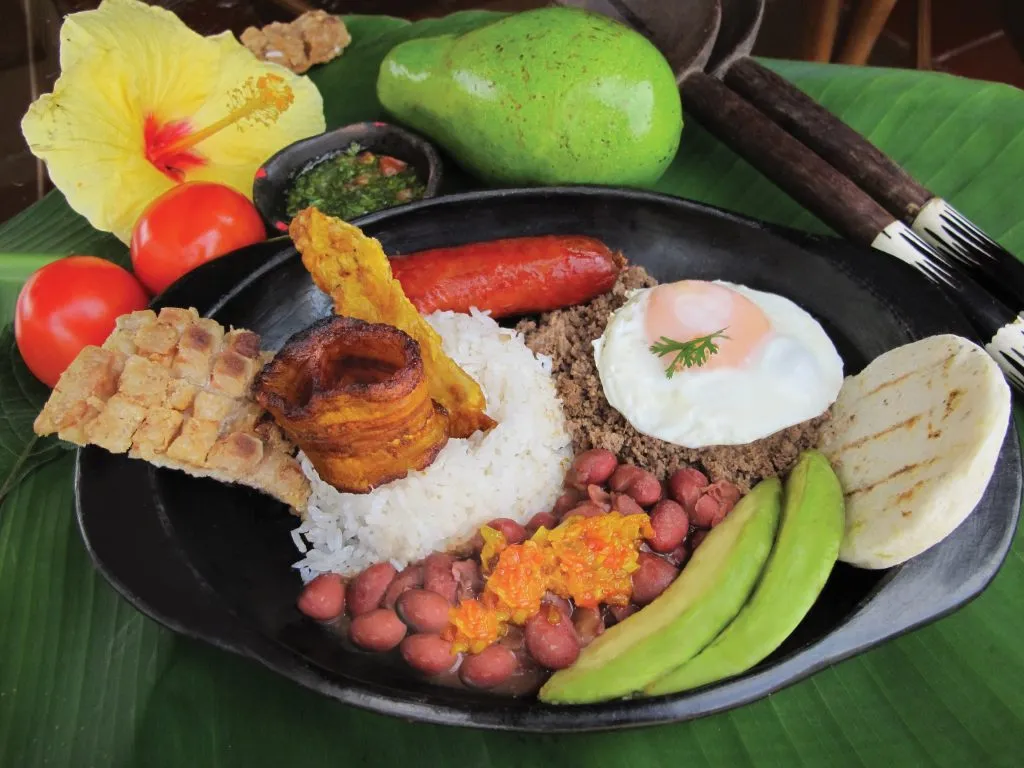
link
To culminate this top 5 countries with culinary delicacies, we can not fail to mention Venezuela with a gastronomy immersed in a world of extraordinary smells and flavors.
The Venezuelan gastronomy has its roots in the indigenous populations in addition to certain contributions that have been of Afro-European influence. In the beginning, the diet of the aborigines, the first inhabitants of the area, he was nourished through what they found in nature through hunting, fishing, agriculture. The arrival of the Spaniards and with them the Africans, made possible the union of their cultures, customs and culinary traditions, giving origin to what today we know as Creole food, a gastronomy product of the mestizaje.
There are those who affirm that the gastronomy of Venezuela brings with it a world of unforgettable perfumes and flavors, that tell their stories, their traditions, their ancestors, and that through their tasting and the tasting of their species their origins can be known. It is necessary to mention that each region of this country has its variety of traditional dishes that identify it, that is to say that it has a whole range of diversity in dishes for the enjoyment of those who live there and their visitors.
In the center of the country the food is more varied; there is a large consumption of chicken, fish, meat, salads and rice. En the East predominates the consumption of fish, seafoods, lobster, potatoes, corn and beef. There is still a strong indigenous and European influence in the west of the country by the consumption of rabbit and goat meat, as well as cheeses. In the beautiful Venezuelan plains the food is mainly the consumption of beef and wild animals and in the Andean region beef, chicken, potatoes, wheat and tubers.
Among some of the dishes and Venezuelan culinary variety is the “Pabellón Criollo” (rice, black beans, fried banana, meat and egg) the “Asado Negro” (meat bathed in dark sauce, rice and fried banana) “the Cachapa”, (corn tortilla) “the Arepa”, “the Hallaca”, chicken soup, meat or fish, among others.
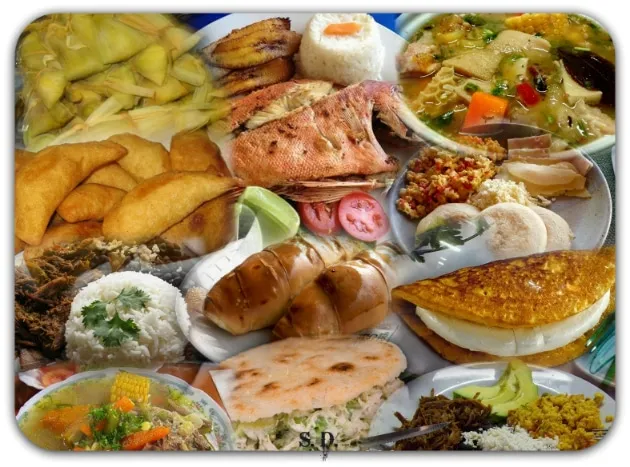
link
In short, the gastronomy of a town defines it, in its totality, its millenary plates. These have in their its composition and elaboration part of their history, of their ancestors, all a fusion of diverse cultures that give an exquisite culinary, result born with the oldest civilizations and that without a doubt takes us to know the idiosyncrasy of each nation.
Written by @luces
.
by: @luces
link consulted
link consulted
link consulted
link consulted
Click on the coin to join our Discord Chat

Witness proposal is here:
Go To Steem Witness Page
In the bottom of the page type: adsactly-witness and press vote.

Use small letters and no "@" sign. Or, click here to vote directly!
Thank you!